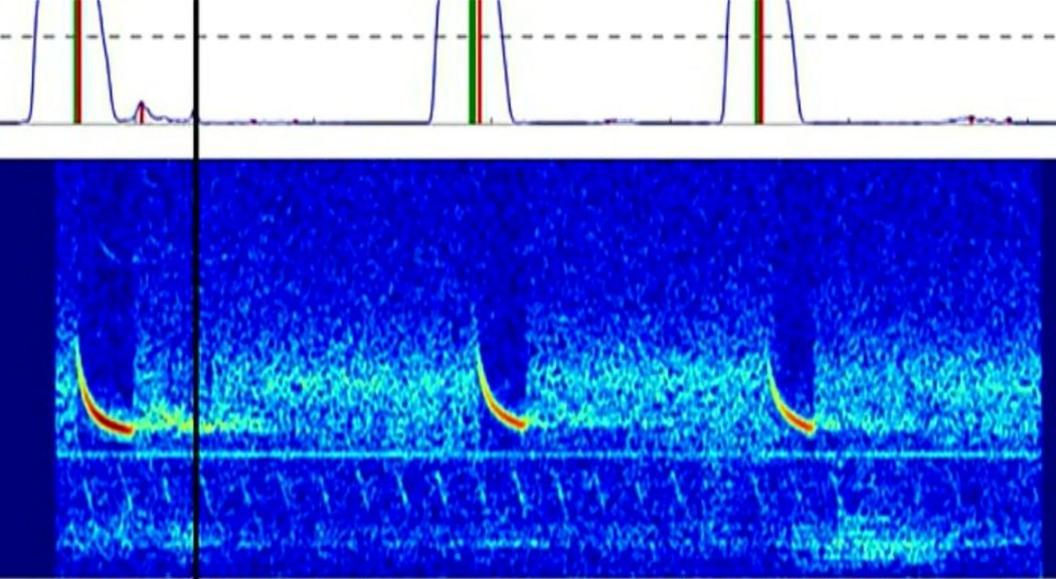Building a bat language database for a new bat detector
- Published
University researchers hope a sound library can help to protect bats
Bats are some of my favourite mammals, but they are so hard to film.
They tend to fly fast and in unpredictable patterns; and of course, they are active at night. This behaviour doesn't just cause problems for us TV reporters, it also makes life difficult for scientists studying bat numbers.
But now scientists at the University of Warwick think they have come up with a new way to identify bat species and it's a method that can be used by any bat enthusiast and not just experts.
All this is good news because studying bat populations is an important way to learn more about the general health of an ecosystem.
Since bats are often pretty high up the food chain, if they are doing well then chances are everything else, from insects to plants, is doing well too.
Database of bat noises

At the bottom of this image you can see the recording of a bat in the wild. On top is the prediction of the type of bat made by the computer.
So what the researchers have done is to record the world's largest database of bat noises.
The tiny, short squeaks that bats make when they are out and about.
This involved catching a lot of bats, identifying them visually and then recording any audible sound they make.
The idea is to build an algorithm that can recognise a bat just from the noise it makes.
Now that's not as easy as it might sound. A squeak is a very short sound. It doesn't contain an awful lot of information for a computer to get its digital-teeth into.
But the researchers at the University of Warwick are very good at pulling patterns out of the tiniest amount of data.
Smartphone app
The end result could be a simple smartphone app that can record bat sounds in the wild and crunch the audio to produce a list of bat species in the area.
It could revolutionise the work of scientists in the field.
Bat identification is a very specialised job, but this research would mean many more people could get involved, really expanding what we know about the natural world.
Read more about this work here;